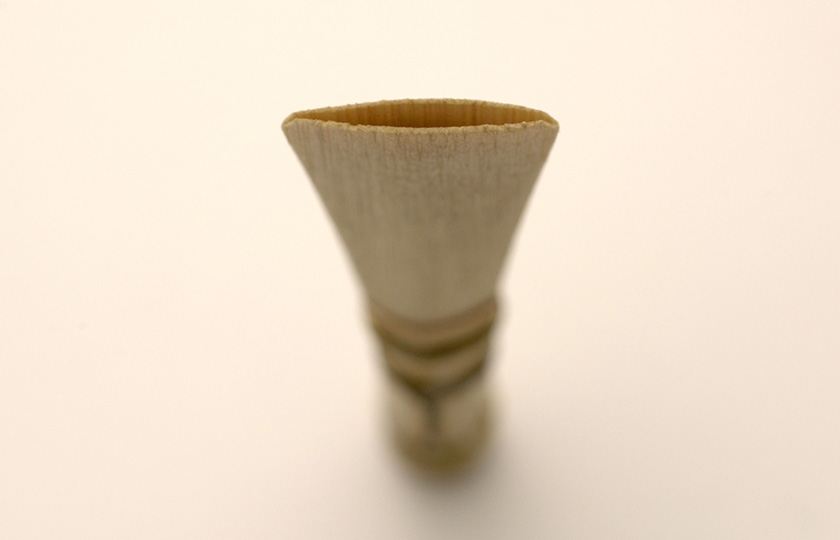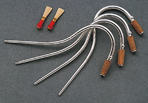Choosing a Bassoon
A Passion for Reeds and Bocals
Different reeds and bocals change the timbre!
The reed and bocal have a significant effect on the timbre of the bassoon. Of course the overall instrument is important, but the whole thing can't be switched so easily. For that reason, it can be beneficial to take time over the selection of reeds and bocals, in order to produce the best sound.
Choosing a commercially available reed
The trick to buying a good, ready-made reed is to choose one that has good proportions. It's best to select one that is bilaterally symmetrical, with a neatly shaped opening. Any that have signs of damage are definitely no good, and it's best to avoid reeds that reveal uneven thickness when held up to the light. If possible, try to find a shop that allows you to actually try blowing the reed when you are choosing which to buy. Also, to make a reed easier to play after purchase, you can try shaving the reed a little.

Choose a reed that is symmetrical
Choosing a bocal
The bocal is the metal, S-shaped tube that connects the reed to the main body of the instrument. Its interaction with the rest of the instrument, along with the influence it exerts on timbre, pitch and volume makes it an important part.
New instruments usually come with bocals of two different lengths included. Both notation and numerals are usually shown on the bocal, and in general the letters indicate the type of bocal while the numbers indicate the length.
The notation for the type varies between manufacturers, but for the length, in many cases, a standard, normal-pitch bocal is No. 1, while a No. 2 bocal is longer with a lower pitch.
Once familiar with your instrument, it's good to try a wide variety of bocals aside from those included with it, and look for bocals that fit your style of play.

Reeds and bocals
Musical Instrument Guide : Bassoon Contents
Structure
- What Kind of Musical Instrument is a Bassoon?
- A Long Tube that can be Separated
- The Bocal and its Various Functions
- Unique Features of the bassoon, and How to Play
- [Experiment1]Comparing the Sound of Tone Holes cut Obliquely and Perpendicular
- [Experiment2]Encasing the Bore in Various Materials
- Bonus Experiment
How to Play
How the Instrument is Made
Choosing an Instrument
Trivia
- An Instrument that is Sensitive to Humidity
- Sounds from water in the U-tube?
- There's a needle in the bocal?!
- Comments by conductors caused popularity to tumble?
- Bassoon classics - Chamber music works
- Bassoon classics - Concertos
- Is the "contra-fagotto" a contrabassoon?
- What is the best tool to file a reed?
